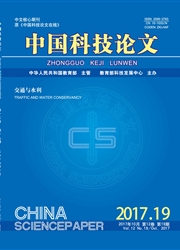

 中文摘要:
中文摘要:
偏振光检测方法是皮肤、心血管和癌症等早期检测的重要方法之一。了解偏振光在散射介质中的传播行为可以有效解释偏振光成像结果和发展新的偏振成像方法。因为生物组织的微观结构十分复杂,所以尚未有成熟的解析理论公式的描述。本文不再局限于光学理论的因果性,而是集中在各个光学变量之间的相关性上。从粒子半径等输入变量和穆勒矩阵各个元素的相关系数入手探究穆勒图像与散射介质物理参数之间的线性和非线性联系。借助蒙特卡罗模拟程序,使用线性回归方法和非线性的核方法对单球体系穆勒矩阵做回归分析。对比线性主元回归和线性偏最小二乘法的结果,核方法的预测精度较高。将现代机器学习方法引入偏振光学理论的研究之中,拓展了偏振光学理论的研究方法。
 英文摘要:
英文摘要:
Polarization imaging techniques have becoming a valid method for skin,cardiovascular system and early cancer diagnosis.Understanding the propagation and interaction of polarized light in biological tissues is conductive to explaining the polarization muller images and developing new polarization imaging techniques.However,the biological tissue is so complicated that none valid analytic formulas are extracted.This paper concentrates on the correlation between Muller Matrices and physical parameters of scattering media,rather than the causality based on optical theory.In this paper,based on the Monte-Carlo program,linear methods and kernel methods have been used to analysize the single-sphere scattering system.Compared with linear principle components regression and partial least squares regression,kernel methods have better prediction performance.In this paper,the modern machine learning methods are firstly introduced in polarization research,which expands the analysis methods of polarization theory.
 同期刊论文项目
同期刊论文项目
 同项目期刊论文
同项目期刊论文
 期刊信息
期刊信息
